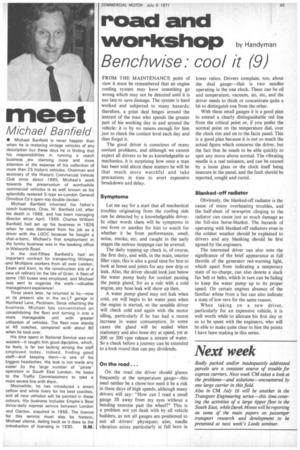meet
Page 65

If you've noticed an error in this article please click here to report it so we can fix it.
Michael Banfield
• Michael Banfield is never happier than when he is restoring vintage vehicles of any description but these days he is finding that his responsibilities in running a coach business .are claiming more and more attention at the expense of his collection of more than 25 historic vehicles. Chairman and secretary of the Historic Commercial Vehicle Club since about 1965, Michael's work towards the preservation of worthwhile commercial vehicles is as well known as his splendidly restored S-type ex-London General Omnibus Co's open-top double-decker.
Michael Banfield inherited his father's coach business, Chas. W. Banfield Ltd, after his death in 1966, and has been managing director since April, 1966. Charles William Banfield had set up his business in 1926 when he was dismissed from his job as a driver with the LGOC because he bought a char-a-banc. Michael's first employment in the family business was in the booking office in Walworth Road.
In the mid-Fifties Banfield's had an important contract for transporting Wimpey and McAlpine workers from all over London, Essex and Kent, to the construction site of a new oil refinery on the Isle of Grain. A fleet of some 150 buses was employed, and Michael was sent to organize the work—valuable management experience!
Three years later, he returned to hq—now at its present site in the ex-LT garage in Nunhead Lane, Peckham. Since inheriting the business, Michael has concentrated on consolidating the fleet and turning it into a more manageable unit with greater utilization of vehicles. The fleet now stands at 45 coaches, compared with about 80 when he took over.
His time spent in National Service was not wasted—it taught him good dipcipline, which, he feels, is far too lacking among the staff employed today. Indeed, finding good staff—and keeping them—is one of his biggest headaches. His task is not made any easier by the large number of "pirate" operators in South East London. He looks to the Traffic Commissioners to take a more severe line with them.
Meanwhile, he has introduced a smart yellow and white livery for his best coaches, and all new vehicles will be painted in these colours. His business includes Empire's Best thrice-daily express service between London and Clacton, acquired in 1958. The licence for this service must also be historic, Michael claims, dating back as it does to the introduction of licensing in 1930. D.M.












































































































































